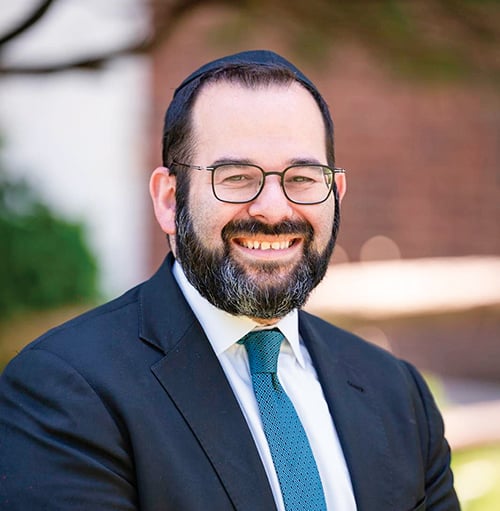העוסק במצות השבת אבידה
Bava Kamma 57b
As you are leaving the synagogue on a Shabbat morning, you find a diamond ring on the floor. The loss is publicly announced in the synagogue three Shabbatot in a row. But no one steps forward to claim it.
According to Jewish law, you, the finder, are a שומר אבידה, shomer aveida, a guardian of lost property and you must guard the ring in your possession until the owner claims it from you.
So, you take the ring home and place it in a safe. When the owner finally comes forward and claims the ring, you go to the safe to retrieve it, but alas, the ring is gone. Somebody, you don’t know who, stole the ring.
Are you now liable to pay the owner the value of the stolen ring?
That all depends on the status the Halacha attributes to the shomer aveida.
There are two possibilities. The shomer aveida either has the status of a שומר חנם, shomer chinam, an unpaid bailee, or he has the status of a שומר שכר, shomer sachar, a paid bailee.
A shomer chinam is a person who volunteers to guard a deposited item free of charge. Accordingly, the Halacha does not hold the shomer chinam responsible for the theft of the article so long as he guarded it in a responsible manner.
A shomer sachar is a person who receives compensation for guarding a deposited item. Accordingly, the Halacha holds the shomer sachar responsible for the theft of the article.
Is a shomer aveida considered a shomer chinam or a shomer sachar?
According to Rabbah, the shomer aveida is a shomer chinam because he receives no compensation for fulfilling the mitzvah of guarding lost property.
According to Rav Yoseph, the shomer aveida is a shomer sachar.
The reasoning of Rav Yoseph is as follows. While guarding the lost property, the shomer aveida is performing a mitzvah. Now, the rule is במצווה פטור מן המצווה העוסק, ha’osek b’mitzvah patur min hamitzvah, if you are busy performing a mitzvah, you are exempt from performing another mitzvah. Therefore, explains Rav Yoseph, the shomer aveida is exempt from the mitzvah of giving charity to the poor. The amount he saves in charity is deemed to be the payment he receives for guarding the lost property and the shomer aveida is therefore a shomer sachar.
The Shulchan Aruch rules that as long as the lost property is in his possession, based on the dictum of ha’osek b’mitzvah patur min hamitzvah, the shomer aveida is a shomer sachar.
The Rambam rules that as long as he is preoccupied with taking care of the lost property in his possession, based on the dictum of ha’osek bemitzvah patur min hamitzvah, the shomer aveidah is a shomer sachar.
Clearly, one’s liability for guarding the lost ring depends on the interpretation of the Talmudic dictum “ha’osek b’mitzvah patur min hamitzvah.”
Does the osek b’mitzvah exemption apply only in circumstances where it is impossible to perform both mitzvot simultaneously, as in the case when the poor man comes by when you are preoccupied with polishing the diamond, a situation, which we shall refer to as the impossible case?
Does it also apply where it is easy to perform both as in the case when the poor man comes by when the ring is lying locked away in the safe, a situation which we shall refer to as the easy case?
Or does it apply where it is difficult, yet still possible to perform both, as in the case when the poor man comes by when you are holding the ring in one hand, a situation, which we shall refer to as the difficult case?
According to Tosafot and the Rosh the osek b’mitzvah exemption applies only in the impossible case. Clearly, argue Tosafot, one is not exempt from mitzvot just because one wears tzitzit, fringes all day or because one is warehousing somebody’s lost property.
According to Rashi, the osek b’mitzvah exemption also applies in the easy case. Accordingly, a person traveling by day on Sukkot to perform the mitzvah of visiting his rabbi, is according to Rashi, exempt from the mitzvah of eating and sleeping in the sukkah when he sojourns at night.
According to the Ran, the osek b’mitzvah exemption does not apply in the easy case but does apply both in the impossible case and in the difficult case.
The Ran cites several proofs for the application of the osek b’mitzvah exemption in the difficult case as follows. In Talmud times, a bridegroom was exempt from reciting Kriyat Shema on account of his preoccupation with his wedding night. Similarly, cites the Ran, a person performing the mitzvah of guarding the unburied dead or digging them a grave is exempt from all mitzvot.
In all these cases it is possible, although difficult, to recite Kriyat Shema while being preoccupied with the first mitzvah. Yet, says the Ran, the exemption applies. In explaining the reason for the application of the osek b’mitzvah exemption in the impossible case and the difficult case as opposed to the easy case, the Ran points out that the Talmudic Dictum is “haosek b’mitzvah” one who is busy with a mitzvah and not hamekayem mitzvah (one who is merely fulfilling the mitzvah).
The Halacha, as expressed by the Rema, adopts the approach of the Ran and this would seem to accord with the position taken by the Rambam in the case of the shomer aveida.
Raphael Grunfeld, a partner at the Wall Street law firm of Carter Ledyard & Milburn LLP, received Semichah in Yoreh Yoreh from Mesivtha Tifereth Jerusalem of America and in Yadin Yadin from Harav Haga’on Dovid Feinstein, Zt”l. This article is an extract from Raphael’s book “Ner Eyal: A Guide to Seder Nashim, Nezikin, Kodashim, Taharot and Zerai’m” available for purchase at www.amazon.com/dp/057816731X or by e-mailing Raphael at [email protected].













